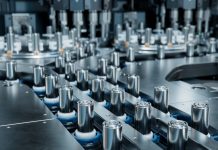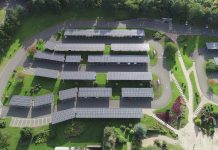A hidden shift in copper oxide catalysts to form metallic copper mid-reaction has been identified as the key to supercharging green ammonia production. This surprise discovery offers a clear path toward developing cleaner, more efficient fertiliser synthesis
Researchers at Tokyo Metropolitan University have made a discovery that could revolutionise the production of ammonia, a vital component of agricultural fertiliser. They found that a common catalyst, copper oxide, undergoes a dramatic, hidden transformation mid-reaction to form metallic copper, which acts as the true powerhouse for boosting ammonia output.
This development outlines a critical roadmap for developing cleaner, more efficient technologies to produce ammonia, potentially sidestepping the massive carbon footprint associated with current industrial methods.
The urgent need for green ammonia
Ammonia is indispensable to modern agriculture, primarily serving as the backbone of fertilisers that sustain the global food supply. However, its current production method, the Haber-Bosch process, is extremely energy-intensive. This traditional approach requires combining nitrogen and hydrogen under immense temperatures and pressures and is estimated to contribute about 1.4% of global carbon dioxide emissions.
Given ammonia’s central role in food security, there is an urgent and powerful motivation to find green alternatives that can operate under milder, less energy-demanding conditions.
Investigating a low-temperature alternative
A research group led by Professor Fumiaki Amano at Tokyo Metropolitan University has focused on the electrochemical nitrate reduction reaction. This emerging technique offers a more environmentally friendly route, synthesising ammonia from nitrates at room temperature and normal atmospheric pressure. In this setup, electrodes are immersed in a chemical solution with a voltage applied to drive the reaction. While earlier studies had identified individual steps in this process, the complete sequence of catalytic events remained unclear.
Unmasking the catalyst’s transformation
The team used copper oxide as the electrocatalyst, which is known to be one of the strongest materials for this reaction. To understand its function, they employed operando X-ray absorption, an advanced measurement technique that allows scientists to examine the catalyst’s electronic behaviour and structural changes as the reaction occurs.
By applying an increasingly negative voltage to small copper oxide particles attached to carbon fibres, the researchers observed two critical phases:
- Passivation at positive voltage:
- Under a more positive voltage, nitrate ions attach to the catalyst’s surface, a process called “passivation.” This prevented the copper oxide from converting to its metallic form and only produced intermediate nitrite ions.
- The metallic switch:
- As the voltage was pushed into the negative range, the researchers observed a sharp increase in ammonia production. This boost coincided precisely with the appearance of metallic copper particles, confirmed by a strong spike in the detection of copper-copper bonds. The team determined that this newly formed metallic copper is responsible for efficiently adding hydrogen to the nitrite ions, completing the final, critical step toward ammonia formation.
A pathway to cleaner industrial chemistry
The findings demonstrate that the formation of metallic copper in situ during the electrochemical reaction is the key to highly efficient ammonia production using a copper oxide precursor. Furthermore, the study highlights how surface conditions, like the initial passivation by nitrate ions, heavily influence a catalyst’s performance.
This deeper understanding of the hidden chemical switch provides a crucial framework for designing the next generation of electrochemical catalysts. By intentionally controlling the voltage and surface properties to promote the formation of metallic copper, researchers can now chart new, more efficient pathways toward truly green ammonia and a cleaner, more sustainable global food supply.











